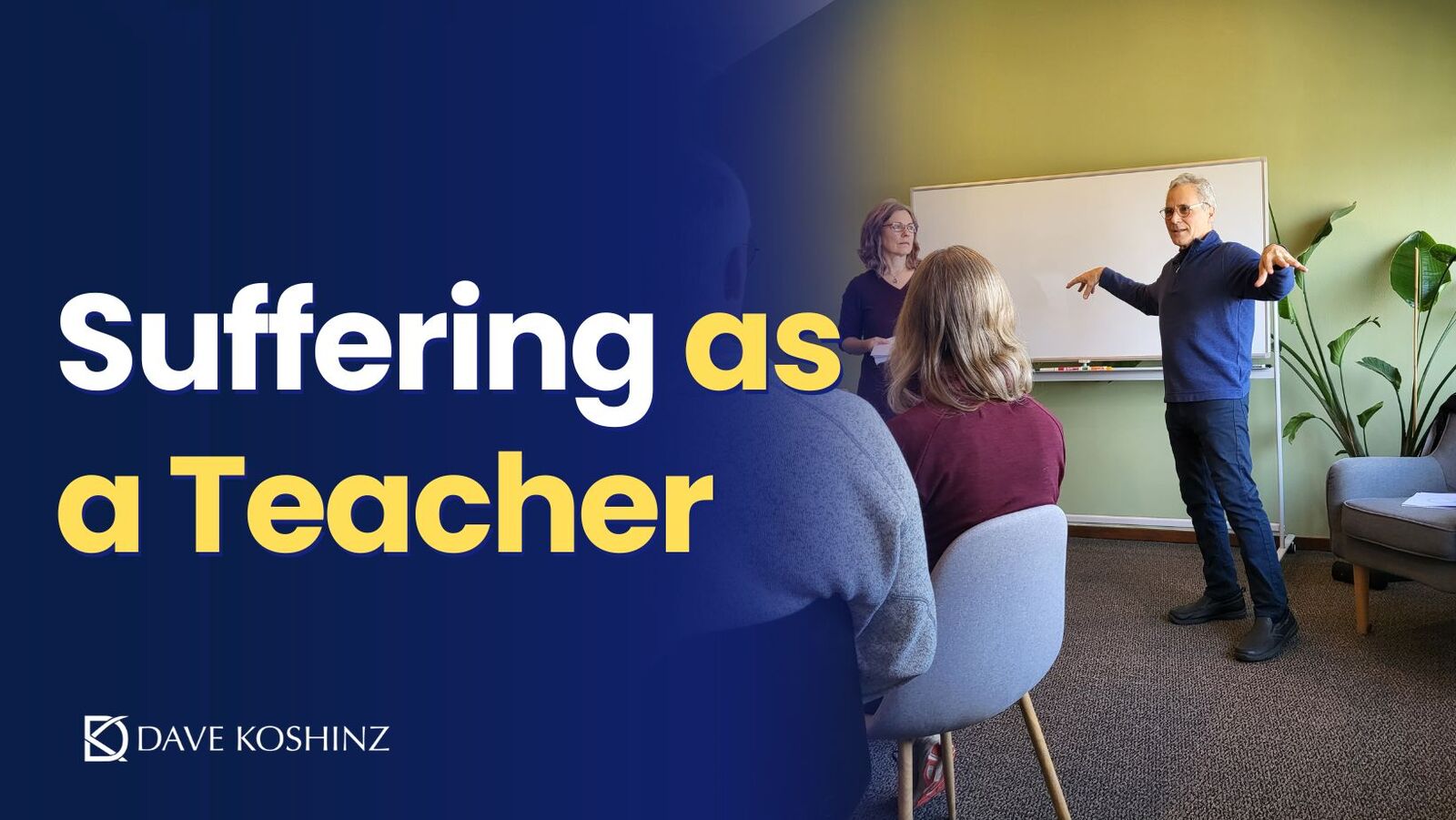

In the words of psychologist Carl Jung, “Until you make the unconscious conscious, it will direct your life and you will call it fate.” Our repeated frustrations—whether in business, relationships, or personal aspirations—often originate from patterns we have not yet uncovered. This article explores how identifying and addressing suffering’s recurring themes can illuminate hidden opportunities for profound transformation.
The Nature of Suffering
At its core, suffering is how we relate to life’s difficulties—pain, discomfort, disappointment, failures, and setbacks. Pain is inevitable; suffering, by contrast, arises fromresistance to painor a distorted interpretation of it. This is why two people might encounter the same challenge, yet respond completely differently. One finds a catalyst to reinvent themselves, and the other becomes trapped in self-defeating beliefs.
Metaphor: Imagine a locked gate at the edge of your property. You can see the lush garden on the other side, but no path to reach it. The locked gate is the suffering—a barrier that stops you from stepping onto fertile ground. Learning to pick the lock and walk through is the process of turning suffering into growth.
The Recurring Themes of Discomfort
We often experience patterns of suffering:
Failed relationships that follow the same downward spiral
Feeling stifled in roles at work or in life
Risk-taking that repeatedly ends in disappointment
In each scenario, the recurring theme is a lighthouse, beaming a signal that something beneath our conscious awareness needs addressing. “If there is no struggle, there is no progress,” said Frederick Douglass, emphasizing that difficulty can point us to areas ripe for transformation.
Why We Become “Stuck”
We Resist Pain: Denying or avoiding pain amplifies discomfort, leading to needless suffering.
We Adopt a Victim Stance: Blaming external circumstances “chains” us to the suffering, preventing us from seeing our own agency.
We Fail to Distill Lessons: We go through the same scenario repeatedly, missing the underlying message each time.
Victim Stance vs. Radical Responsibility
A victim stance around suffering hands over our personal power. We believe life is happening to us rather than through us. This mindset fosters a passive approach, where we wait for circumstances to change instead of proactively seeking solutions.
Radical Responsibility, on the other hand, says:
I may not have created this challenge, but I can own my response.
I look for where I do have influence, even in the smallest ways.
I acknowledge my role in perpetuating or alleviating the problem.
Viktor Frankl, a Holocaust survivor and psychiatrist, wrote,“When we are no longer able to change a situation, we are challenged to change ourselves.”Even in extreme adversity, Frankl emphasized the power of choosing our inner response.
Shifting Perspective: From Suffering to Empowerment
Identify the Pattern: Recognize recurring struggles and label them explicitly. For instance, “I notice that each time I trust a new partner too quickly, the relationship fails.”
Ask What’s Being Taught: Seek the lesson behind the discomfort. Perhaps you need to refine your sense of boundaries or learn new communication skills.
Develop a Plan for Change: Ask yourself, “What single action can I take to respond differently next time?”
Embrace Incremental Growth: True transformation rarely happens overnight. Embrace small steps that, over time, result in big changes.
Example in Business:
Consider an entrepreneur who repeatedly hires employees without a proper vetting process, leading to high turnover. Each new disappointment adds to their suffering. By taking radical responsibility for the high turnover—admitting their hiring process is failing, not necessarily the employees—they distill the lessons needed to evolve. The suffering then shifts from unspoken desire --"wanting good employees"-- to active progress-- "taking responsibility for the weakness in the process".
Moving from Distraction to Effective Action
Suffering can be a distraction from the real cause of our discomfort. We invest so much energy in lamenting our circumstances that we fail to take the steps to correct them.
Step Outside the Bubble: Sometimes talking to a mentor, a coach, or a trusted advisor provides the external perspective we need.
Reframe the Narrative: Rather than focusing on “It always goes wrong for me,” shift to “What small detail could I do better next time?”
Track Progress: Keep a simple journal or checklist. Each time a setback occurs, note how you responded differently than before. This small shift in perspective anchors you in improvement rather than despair.
The True Benefit Lies in the Response
We’re often inspired by stories of people who suffered deeply—illness, loss, public failure—and then rose to do great things. It’s easy to interpret this as suffering being beneficial by default. But in truth, it’s not the suffering itself that benefits us; it is the response—how we choose to process, learn, and eventually act upon that suffering—that makes the difference.
“What matters most is how well you walk through the fire.” — Charles Bukowski
The transformation begins when we refuse to remain victims of circumstance and instead become leaders of our own evolution.
Applying Big Lessons to Daily Life
You don’t have to wait for a life-altering event to use the power of this perspective. Every day offers small moments of discomfort or frustration—a tense conversation, a delayed project, a misunderstanding with a partner. By facing these head-on with curiosity instead of resistance, you build emotional and mental resilience. Over time, small acknowledgments add up, making a profound impact on your well-being and professional success.
Micro-Shift: When you feel suffering arise, pause and ask: “What can this discomfort teach me about myself, my habits, or my environment?”
Integration: Take one piece of insight and apply it in real time—whether adjusting your communication style or rethinking a strategy.
Reflection: At day’s end, review how you handled the situation. Celebrate the small victory of approaching it with growth in mind rather than defeat.
Suffering, in its truest form, is an impetus for evolution—a silent yet potent yearning to become more resilient, adaptive, and creative. When we stop fighting against suffering and choose instead to let it guide us, we unveil opportunities for transformation in both our personal and professional realms.
Remember:
“Suffering is life’s unspoken desire to evolve, longing to be set free.”
We hold the key to that locked gate. Bychoosing radical responsibility and fostering an unwavering commitment to learn from our pain, we gradually set that transformative energy free—and in doing so, unlock deeper growth, innovation, and fulfillment in every part of life.

